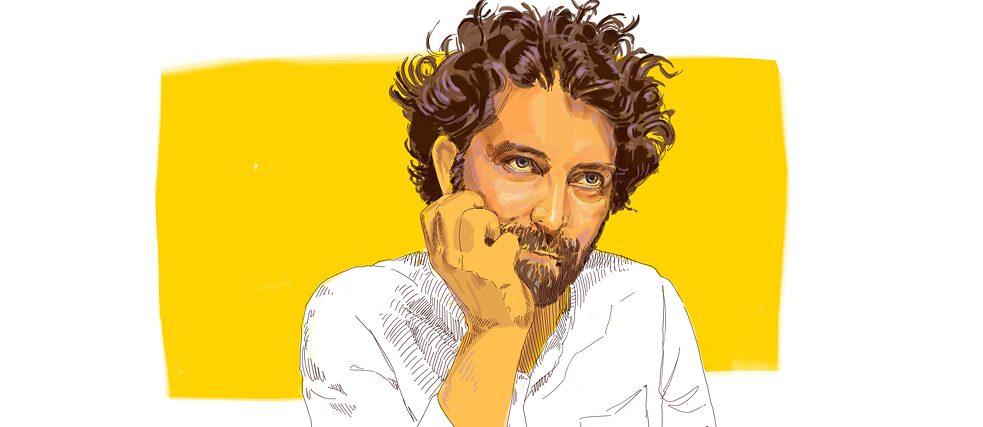by Hemin Khasraw from Erbil
Comics in Shengal

Hemin Khasraw is a 41-year-old artist who works with Art Matica, a Canadian organisation whose activities cover Iraq and Kurdistan. He was born in the historical city of Erbil, and he obtained his MA in Sociology and Anthropology from the University of Simon Fraser in Vancouver in Canada.
Comics in Shengal is the name of Hemin’s project in which he aims to use comics as a form of art to promote critical thinking and raise trauma resilience awareness. The same idea was put into practice for the first time in the city of Mosul back in January 2019, and it proved to be a success. At this moment, Hemin is working to release this project in the Yazidi city of Shengal. The situation in Shengal is particularly complex owing to the religious, social, and political divisions; there are Yazidis, Shiites, and Sunnis, and the armed forces are composed of members from the various groups. Although the situation in Shengal is fragile due to the city’s destruction and the mass exodus of its inhabitants, Hemin believes that those who have remained have great potential.
Hemin aims to recruit participants from diverse backgrounds to initiate a channel for debate and communication between the different groups. He anticipates that conflicting views will inevitably arise from the existing divisions, but he would like for these to develop within the context of the workshop so that they may be resolved through debate and communication. At the same time, he wishes to protect the participants and to avoid the risk of placing them in any danger.
For this project, Hemin would like to achieve seventy per cent female participation in order to equip them with the tools for critical thinking. The female population of Shengal has had to endure much societal oppression, so that even when women become active in the workforce, they lack the proper foundation necessary for the development of critical skills. Thus, this project aims to empower women. The number of participants should not exceed 16, in order to allow for the time necessary for each participant to learn as effectively as possible. Ages range from 19 to 25 years old. The workshop will take from five to six days, and it will be followed by an exhibition of the stories as told through comics and a catalogue of the three best comic stories by the participants. This will be the first comic exhibition ever in Shengal.
After being equipped with the tools to use comics to tell their stories, the participants will work individually. Through these workshops, participants will turn the details of their daily lives and encounters into comic stories. Later on, they will be taught how their own stories relate to those of others and to their surroundings.
Hemin aims to take academia and art, through the vehicle of comics, to the streets, to the centre of action. By linking academia to everyday life, Hemin hopes to bypass academic journals and research, which receive little attention, and instead effectuate real change, which is the ultimate goal. Through art and comics, he hopes to support and empower survivors to overcome trauma by telling their own life stories.
Placing importance on agency and the willpower of individuals in changing the course of their lives is the core method of Hemin’s work with people at the grassroots level. The development of critical thinking and trauma resilience through artwork and cultural production is part of the solution in overcoming conflict, from divisions within society to outright war.
Hemin believes that people tend to become pessimistic and to think they are isolated in their problems. Comics and other forms of art can challenge this way of thinking and highlight the commonalities between people in the details of their daily lives and their encounters in wartime.
The science of trauma resilience aims to bring people back in touch with their bodies, their dreams, their environment, and their basic necessities, even to such simple things as food and sleep. Hemin wishes to work with the small details within the context of major events and to reconcile individuals with themselves.